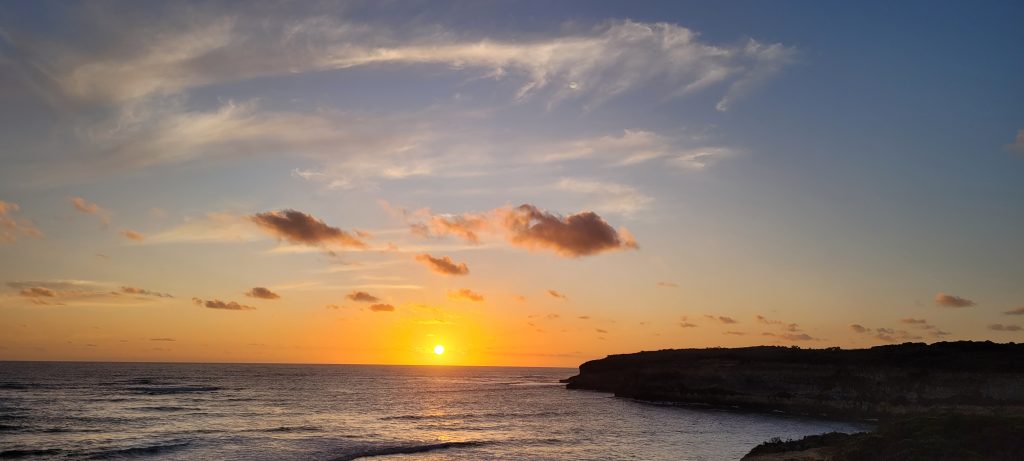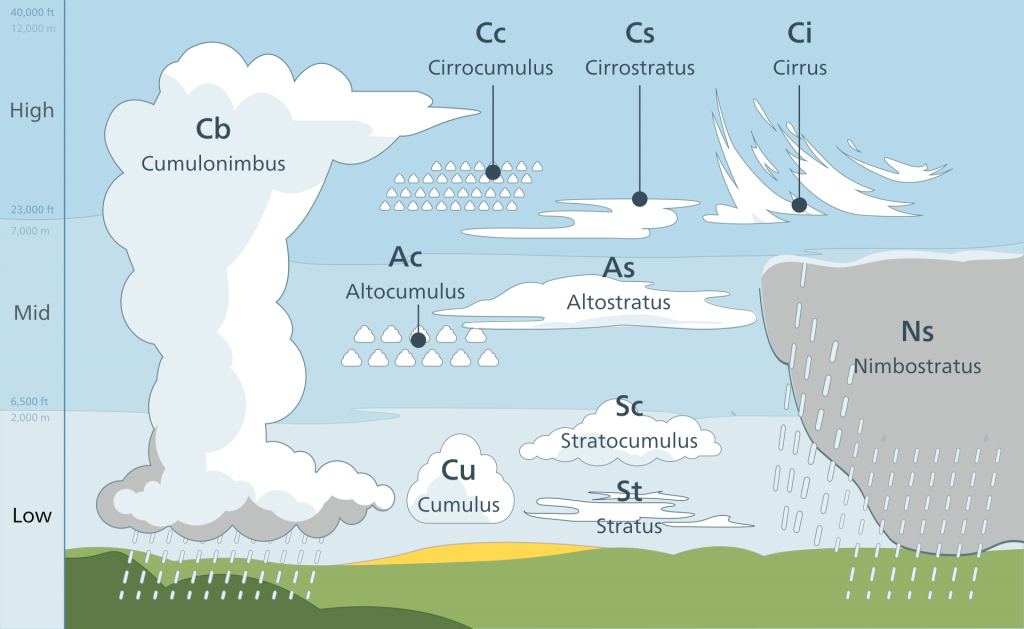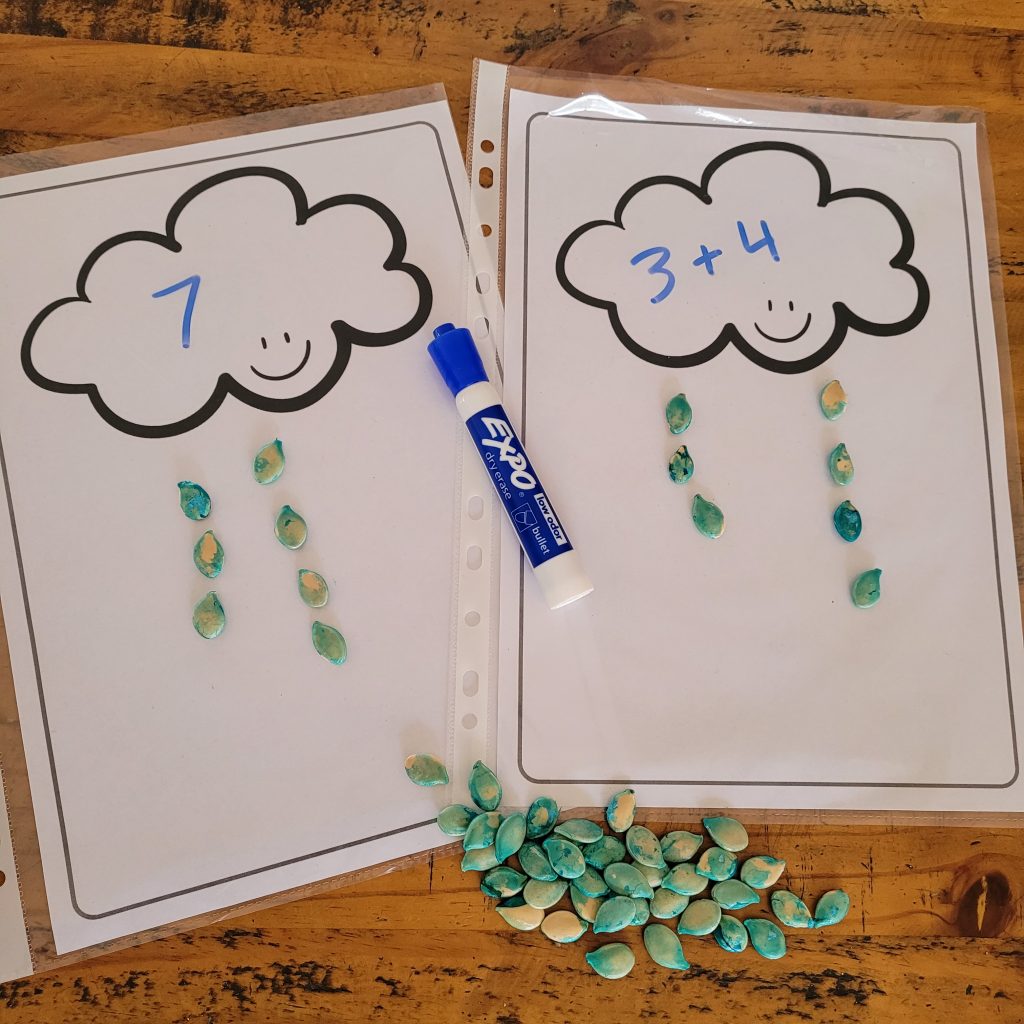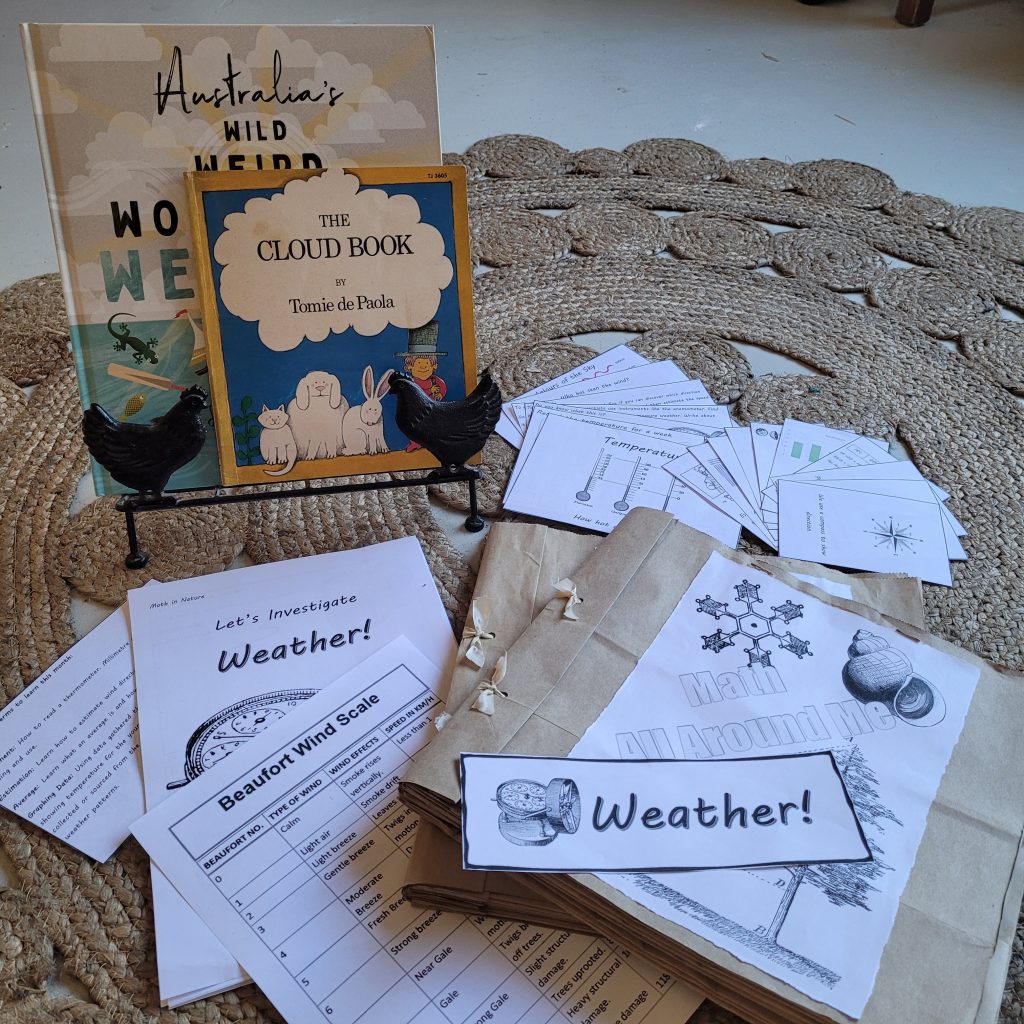
How would you describe a cloud?
Artists describe clouds as ‘the soul’ of all scenery.
In the words of a poet, clouds are ‘lying pendent between two worlds.’
‘A mass of tiny water drops or ice crystals that floats in the air above Earth‘, is what a scientist would say about a cloud.
And a meteorologist would tell you the cloud’s name according to its shape and altitude.
But no matter how you describe a cloud, I think that we all agree, clouds are a beautiful and fascinating part of the amazing world we live in.



Clouds are classified by their shape and altitude.
| Altitude | |||
| High (6km-12km and above) | Cirrus | Cirrocumulus | Cirrostratus |
| Mid-level (2.5km – 6km) | Altocumulus | Altostratus | |
| Low (from the earth’s surface to 2.5km) | Stratus | Stratocumulus | Nimbostratus |
A Culumlonimbus cloud is lovingly nicknamed the ‘The King of Clouds’ as it can stretch from low levels up to 16km! It is the cloud of storms!
The word “cloud” comes from the old English words “clud” or “clod” meaning lump of land or lump of rock, which in the 13th century was extended to apply to the lumps of water in the sky. The cloud names have Latin origins. Cumulus is Latin meaning ‘heap’, Cirrus means ‘curl or ringlet’, Stratus means ‘spreading out’ and Nimbus means ‘rainstorm’. The word alto is also Latin meaning ‘high’.

NASA estimates that, at any one time, 67% of our earth is covered by clouds. When viewed from space our planet is a swirling palette of blue and white and green—the sea, clouds, and land. But our planet is not the only one to have clouds. On Earth, clouds are made of water, but if you could visit Jupiter, the clouds there are yellow-hued and made of ammonia and ammonium hydrosulfide!
Another interesting fact about clouds is that even though a Cumulus cloud looks light and fluffy, it is HEAVY. An average cloud can weigh up to 500,000kg! Does that make you wonder how it can hover above us and not come crashing down? If you would like to investigate this amazing mathematical mystery Weather Works has a great post explaining it for us.
If you want to understand the science and math behind why clouds float above us, try this video.
If you are more interested in lying on a picnic rug, on a lovely autumn day, and gazing up at the sky, here is a beautiful poem by Naseer Ahmed Nasir to set the mood.
Clouds White clouds Morphing wonderfully Watch those bears Changing into Rows of elephants Shaping like A frail old man standing Rearranging into children Playing with balloons. White clouds Sway on cradle of the wind Occasionally shrivel With toil and sadness At times inflate With joy and gladness Never forget Heaven nor earth They lie pendent Between the two worlds. White clouds Strolling since eternity Telling strange fables Of grand olden dwellings With a world of ancient souls When there was nothing, but A fluid of light, A landscape of mist And a suspended caravan Of several ages. White clouds, now Moulding into sombre faces, become Storms sulking on the horizon. Thousands of maladies thrive Above and underneath the land. White clouds Course through hearts, Surging in The plasma flow of vessels.
And then you might like to head over to the National Art Gallery of Canada to delight in the Art of Clouds.
Clouds as a nature study theme are fun and rewarding. Spend time watching and observing the sky, then practice painting what you observe in your journal.
Use these identification flash card series from the Bradbury Museum to learn to classify the clouds you see.
With your youngest children relax with these super cute cloud stories.



Practice simple math with this raindrop counting activity from Stephanie at Primary Theme Park.

Extend your cloud study into a math weather unit with our Math Pockets for 2023.

How ever you choose to enjoy clouds, remember our Great Creator, who holds all things in His hands.

We absolutely love Nature Study Australia! It’s a beautiful and carefree way of learning.